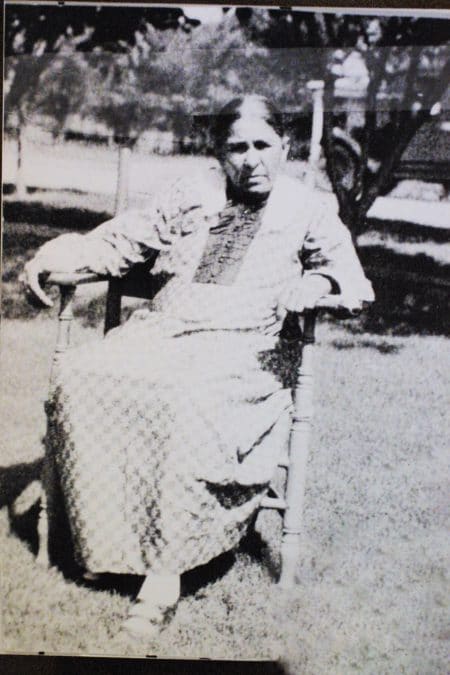The Citizen Potawatomi Nation’s Cultural Heritage Center provides resources to keep CPN history safe and accessible for generations to come. One key way the Nation does this is through the CHC’s archives. To highlight some of the CHC’s archival holdings, the Hownikan is featuring photographs and family history for every founding Citizen Potawatomi family. If interested in assisting preservation efforts by providing copies of Citizen Potawatomi family photographs, documents and more, please contact the CHC at 405-878-5830.
Acton
Some records indicate the Acton Potawatomi family connection begins with Chief Ashkum (More and More) — Christian name James Acton Sr. — and his two marriages to first wife Madeline Oscum and second, Angeline Bellaire, Azhnick.
He was born in the late 1700s and served the Tribe as an important headman and orator during the 1800s, addressing crowds about the negative repercussions the Potawatomi faced losing their homelands in the Great Lakes. Every speech Ashkum made included historical references and stories of prior Potawatomi encounters with the federal government. He had six children with Madeline: Mary Ann, Susan, Harrison, Cassie, John J. and Joseph Acton; and four children with Angeline: Helen, Zoa, and twins, Mary Louise and Julia.
Chief Ashkum established a village along the Eel River in northern Indiana and signed the 1821 Treaty of Chicago. The treaty ceded almost all Potawatomi land in southwestern Michigan. In 1826, Ashkum signed the Treaty of Mississinewa, and in 1832, the Treaty of Tippecanoe. This established an official reservation for Ashkum and his band, but his name later appeared on several treaties that revoked Potawatomi land rights without his knowledge, including the Treaty of Potawatomi Mills. While getting annuity payments, Chief Ashkum and other Potawatomi leaders learned that their land ownership status changed.
The Tribal leaders and Ashkum appealed the treaties to federal agents, stating that they did not agree to cede more land and that the president would not approve. Sadly, their pleas fell on deaf ears. In 1838, hundreds of Potawatomi, including Ashkum, were forced to leave their homelands on the Trail of Death.
English artist George Winter captured sketches of Potawatomi like Ashkum and other Native Americans living in the Great Lakes region, and he chronicled the beginning of the Trail of Death through his artwork. Winter’s sketches remain the only known first-hand visual representation of any forced removal.

Ashkum’s descendants
The Acton children experienced a time of great change and upheaval. While their parents survived forced relocation, the Kansas reservation along the Oregon and California Trails made it desirable to developers. To open the Potawatomi land for commerce and the railroad, the federal government crafted the Treaty of 1861 that allowed the Tribe an opportunity to own land individually through allotments rather than communally. The treaty offered Tribal members the chance to become U.S. citizens, and numerous Acton family members chose to receive allotments.
Several of Ashkum’s children married other Potawatomi, including daughter Mary Ann. She wed Wezo Burnett, and after her passing, he married her sister Susan. Together they had two children, Cora and Agnes.
On Nov. 2, 1872, Helen married Charles Richard Rhodd in Rossville, Kansas, and they had seven children together: Viola Alice, Ida Florence, Noah J., David C., Maggie, Thomas and Charles Daniel.
John J.’s first wife was Pekeshnoquah and second, Mary Vasser. Harrison and his wife Mary had one daughter, Madeline, and Cassie and her husband Alex Leonard had two daughters, Lucretia and Lizzie.
Zora had three children with Evanes Doud: Grace, Leroy and Ernest. Mary Louise married Cornelius O’Marra, and they had four kids together: James, Patrick, Katie and John. Mary Louise’s twin sister Julia had three children with her husband: George, Maggie and Laura Davis.
The allotment process proved unsuccessful for most Potawatomi due to multiple factors, including the federal government’s failure to uphold all the treaty’s agreements. In 1867, the Tribe signed a new treaty and purchased land in present-day Oklahoma. Numerous Acton descendants moved from Kansas to the new reservation and established homesteads in southern Pottawatomie County near Sacred Heart where many still live today.
If interested in helping preserve Citizen Potawatomi history and culture by providing copies of family photographs, documents and more, contact the Cultural Heritage Center at 405-878- 5830.
